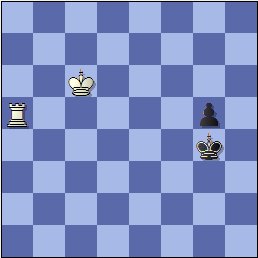And all evidenced by the same game! More on this momentarily.
First, the background. The 100th edition of the New in Chess Yearbook (a misnomer, as it comes out several times a year - it didn't start in 1912!) has been published, and they've included some nice bonuses. The marquee feature is a theoretical article by Garry Kasparov, offering the "final word" on the Zaitsev Ruy Lopez - or at least the 12.a4 line thereof.
There are other bonus articles, and the one we'll cite here is by Rene Olthof, called "The Deepest Novelty". He shows a series of deep novelties in the article, and the further the article goes the later the novelty. Finally, he reaches this "opening" position:

Technically speaking, the novelty came 13 moves earlier, when Black played 51...Ra8, but everything Black has done since then has been following analysis by the loser of the earlier game. So here we are after 63 moves, at a position Vladimir Malaniuk claimed would have drawn his game with Artur Yusupov. (Or "Jussupow", for those looking him up in a ChessBase database.)
Now, because the analysis ended at this point, it's true that any White move, no matter how good or bad, would be a novelty. What makes the game non-trivial is that Malaniuk's evaluation is not just wrong but obviously wrong, and one doesn't need a tablebase or an engine to figure this out. (A good thing, since the sequel to Yusupov-Malaniuk was played in 1987.) The most obvious moves suffice, and all the more so since this was a correspondence game! White played 64.Kd5, which is obvious and best but not even the only winning move. (Six other moves also win!) The game continued 64...Kf3 65.Ke5 g4 66.Ra3+ and Black resigned.
Good prep by White, but horrible prep by Black! As the variation he chose left him a pawn down in a rook ending, he had to be extremely sure that it could be held. Unless he sent his opponent lots of if-moves (or a few extremely long ones), he had months and months to check and refute the Malaniuk line. At any rate, it's fascinating to see an analytical novelty on move 64 (an apt number for chess), and it sets a mark that's going to be hard to beat!
To see the full game, have a look here.